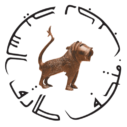Start Of the Collection
Tareq first started collecting with his trip to Baghdad as a fourteen-year-old boy in the 1940s, which then progressed to book and manuscript collecting in England during the 1950s. As a student, he received a weekly allowance which was paid by Kuwait’s Educational Office in London, and he would spend much of the money he received buying books. The Educational Office was extremely generous, and often, after buying a book, would reimburse him, no questions asked, as they considered the books educational. By the 1960s, Tareq and Jehan had spent a lot of time travelling by car around the entire Middle East, sometimes even driving to England. When the Rajab’s spent a year in Denmark, they also made the journey by car. On these long journeys, Tareq and Jehan started collecting from dealers in cities such as Damascus and Istanbul and villages in more remote areas of Syria, Palestine and Iran. Jehan had always been interested in people and cultures and had an anthropological view of the world.
While the aim of these trips was to enjoy themselves, they also aimed to photograph and collect as much as they could to help preserve aspects of various cultures lost through rapid modernisation. In those days, modern road systems in many countries they visited had not been built, and Tareq and Jehan instead, drove across rough roads, through mountains and would camp beside villages and tribes. Often, they would go and meet the people there and frequently managed to buy artefacts from them. In the 1960s, Istanbul, for example, had not yet become as touristic as it is today, and they were able to find many interesting objects for sale, especially ethnic items, which at the time, very few people were interested in. Throughout these many travels, Jehan saw many of the traditional weavings and embroideries made by folk and tribal societies and developed a great admiration for them. The quality was also remarkably high as people had not yet started making them for tourists. As work commitments grew for Tareq and Jehan and the political situation worldwide began to change, camping trips became less frequent. Instead, they started flying to various destinations, collecting from multiple sources. Much like the auctions held at stately homes in Britain, Tareq would also buy from failing Indian palaces.
The idea to build a museum of Islamic Art was one that Tareq had during his time as the director of Museums and Antiquities in the 1960s. He put forward his suggestions and ideas to his superiors a number of times; however, there was very little interest and certainly no budget allocated for such a thing. The arts of the Islamic world were something he had come to develop a genuine interest in, and by the early 1970s, he began to collect on a serious scale as a collector, rather than a hobbyist, which had been the case in decades earlier. With his school firmly established, he had time to travel to different places and to auctions in London. As well as buying from people on his travels, Tareq collected through auction houses such as Sotheby’s Christie’s, Bonham’s and others. At the time in the 1970s, it was very much a buyer’s market and long before buyers from the United Arab Emirates and Qatar became involved. He also attended sales in old British stately homes, whose forebears had collected treasures such as manuscripts, ceramics, metalwork and glass from all over the world. Eventually, he established his reputation in the market, and several dealers approached him, helping him acquire several interesting artefacts, including the enamelled jewels of the Sultan of Bukhara, which are currently on display.
Tareq’s early focus was on ceramics, manuscripts, metalwork and glass. By the mid-1970s, he has amassed a sizeable collection, displaying most of the objects in his house. At this point, he began seriously considering the possibility of establishing a museum where he could display his collection to the public. There were very few educational resources on the artistic history of the Islamic world in Kuwait. Consequently, one of his objectives was to provide a venue where people living in and visiting Kuwait could learn about such things. He had a villa in Jabriya, near the New English School, so it was decided that the museum would be housed there, remaining in the same place to this day. Soon after, during the late 1970s, work began on the museum. By 1980, it was formally established and inaugurated, becoming the very first Islamic Art museum in Kuwait and the entre Gulf. Roughly five years later, the museum was expanded to include Jehan’s collection of Jewellery, costumes and muscial instruments they had collected together. Jehan would split her time between working at school in the mornings and at the museum in the afternoon. At this time, her writing began to take off. She spent much time archiving museum artefacts, especially in her area of interest; jewellery, textiles and costumes.
